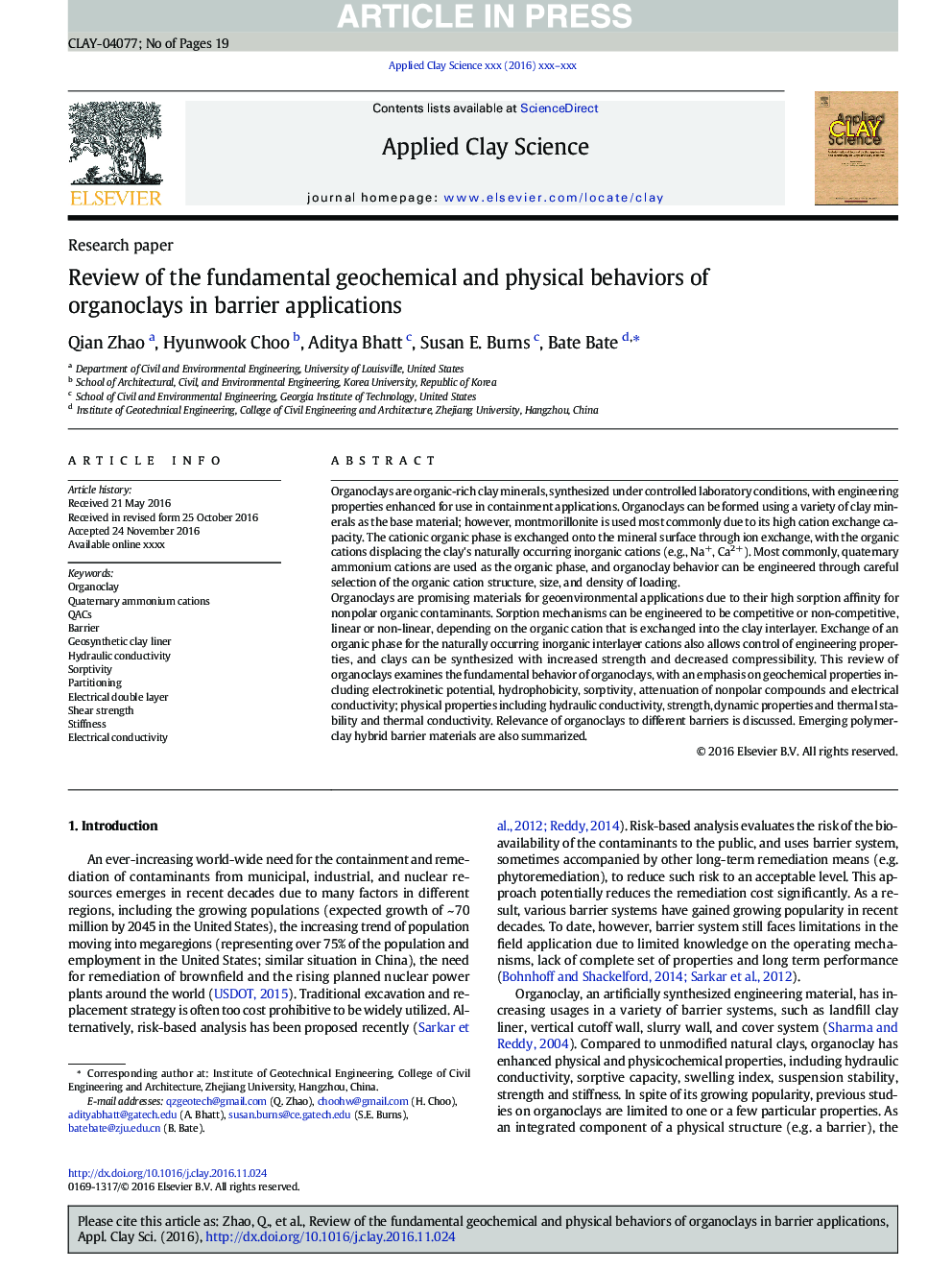| Article ID | Journal | Published Year | Pages | File Type |
|---|---|---|---|---|
| 5468684 | Applied Clay Science | 2017 | 19 Pages |
Abstract
Organoclays are promising materials for geoenvironmental applications due to their high sorption affinity for nonpolar organic contaminants. Sorption mechanisms can be engineered to be competitive or non-competitive, linear or non-linear, depending on the organic cation that is exchanged into the clay interlayer. Exchange of an organic phase for the naturally occurring inorganic interlayer cations also allows control of engineering properties, and clays can be synthesized with increased strength and decreased compressibility. This review of organoclays examines the fundamental behavior of organoclays, with an emphasis on geochemical properties including electrokinetic potential, hydrophobicity, sorptivity, attenuation of nonpolar compounds and electrical conductivity; physical properties including hydraulic conductivity, strength, dynamic properties and thermal stability and thermal conductivity. Relevance of organoclays to different barriers is discussed. Emerging polymer-clay hybrid barrier materials are also summarized.
Keywords
Related Topics
Physical Sciences and Engineering
Earth and Planetary Sciences
Geochemistry and Petrology
Authors
Qian Zhao, Hyunwook Choo, Aditya Bhatt, Susan E. Burns, Bate Bate,
